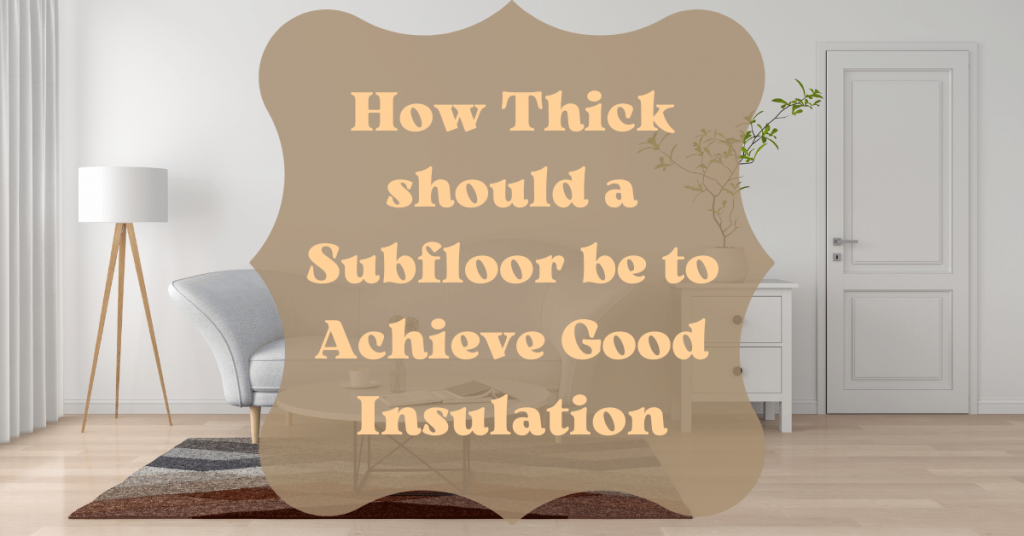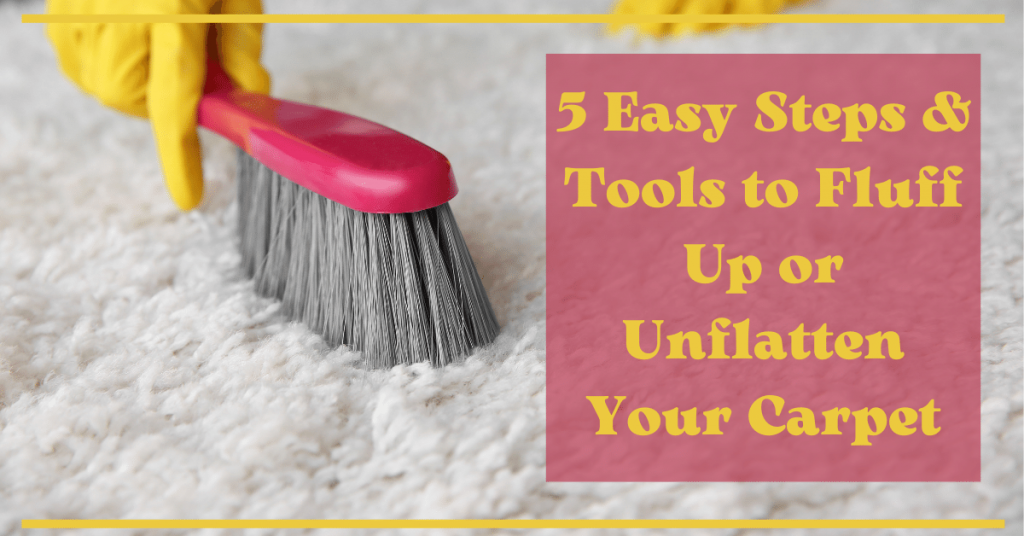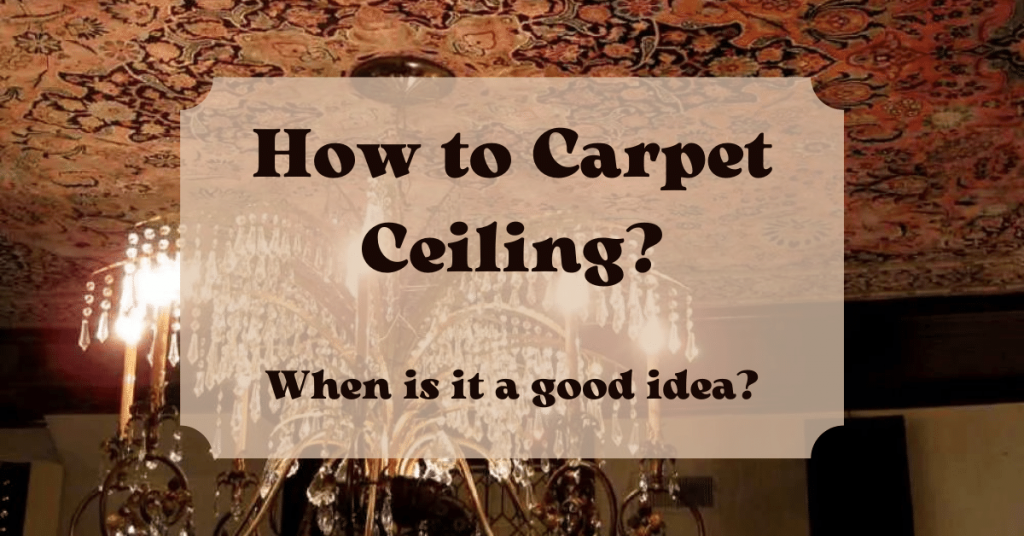Subflooring is one of the essential aspects of flooring that you need to consider when going for new flooring. There are also many subfactors to the subflooring, and getting them right can enhance the longevity and comfort of your flooring. Getting the ideal subflooring comes with many significant advantages, such as energy savings and optimum insulation. So how thick should a subfloor be for good insulation? Let’s find out all the answers to our questions in today’s article.
Plywood flooring should be a minimum of 5/8 inch, while OSB needs to be at least 23/32 inch for good insulation. Other factors such as Joist Spacing, Vertical Spacing, and Underlayment Options can increase or decrease required subfloor thickness

What is a subfloor?
Before going deeper into the primary query, we need to understand the flooring basics. For those who are new to flooring, you might be confused by the term subflooring and its various factors. So let me break it down for you.
Every floor is made up of three layers:
- The first layer is Outer or visible layer that you see. It can be a layer of carpet, vinyl, tile, hardwood, or other material.
- Beneath the top layer is the underlayment layer. It usually contains padding materials and is supposed to be 1/4 to 1/2 inch thick.
- Gong downwards from the underlayment layer, you will come across the Subflooring, which is the foundation of your entire floor structure. This layer is made up of plywood, particleboard, or oriented strand board (OSB).
Flooring insulation and some of its pros
Now a part of our today’s article’s goal is to find the right subfloor thickness for best insulation. Now, what is this insulation, and why do we care about getting the proper insulation? Let’s find out.
Insulation material is a simple method to trap heat during the ice-cold winter season. But this doesn’t mean it’s bad during summers- No, cause during summers, the proper insulation helps keep the heat out allows cool air inside the house. So, in short, flooring insulation comes with a lot of advantages such as:
- Insulation keeps the temperature regulated in summers and warm in winters.
- It’s a more energy-efficient method.
- Insulation material also proves itself to be more cost-efficient by using energy efficiently.
How Thick should a Subfloor be to Achieve Good Insulation?
For the best insulation, you need to have a Plywood flooring that should be a minimum of 5/8 inch, while OSB (oriented strand board) needs to be at least 23/32 as it does not hold fasteners well as plywood, so it is a bit thicker for best insulation. Other factors such as Joist Spacing, Vertical Spacing, and Underlayment Options are also crucial factors that should be taken into account as they can increase or decrease required subfloor thickness
Let’s check out all the factors that can change your required subfloor thickness for the best insulation.
1. Joist Spacing
Subfloor is placed upon joists, and the spacing between joists plays a vital role in determining the right thickness for our subfloor. For example, in the case of structural purposes, when the distance among joists is increased, then the thickness of the subfloor also needs to be increased according to that. If the joists are 16 inches or less than 16 inches apart, then the 1/2 inch subflooring will be enough, but you will need thicker subflooring for more stability in the case of older homes.
Furthermore, you also need to check your house structure to select the best thickness of the subfloor relevant to your home’s structure. Because even though a thicker subfloor is best for insulation, it can limit the vertical space remaining for underlayment options.
2. Vertical Spacing
When discussing a floor’s material thickness and vertical spacing, we need to discuss a product’s R-value. R-value basically determines a material’s insulating capacity. For example, materials having a higher R-value have greater insulation capacity and can easily trap the heat from escaping the flooring during winter and keep it out during summers.
INFORMATION
Plywood has a R value of 1.1 per inch while OSB has a R value of 1.4 per inch
Similarly, in the case of subflooring, Plywood has a lower R-value than OSB. So, Plywood will have lower insulating quality than OSB for the same thickness. Therefore, if you have a tighter vertical space, you would need a product with a high R-value to ensure you get a proper amount of insulation.
3. Underlayment Options
In the last category, underlayment options give you the choice/option to fix any previous mistakes or sacrifices that you had to make in subflooring insulating quality. For instance, if you have selected a high insulating underlayment option, then you can easily adjust it with a thinner subfloor, and this can go the other way around too.
NOTE
If you choose a comfortable underlayment option and still want proper insulation, then I recommend you go for a thicker subfloor or the one with the highest R-value
The right subflooring for best insulation
Each factor contributes to deciding which one’s the best option for you. Therefore you need to keep all your requirements in mind and cross-check them against the different factors to get the right subfloor thickness for the best insulation.
Ending Remarks
So for today’s article, we focused solely on our main query, i.e., How Thick should a Subfloor be to Achieve Good Insulation? I started today’s article by stating basic definitions and common understanding factors related to flooring, subflooring, and insulating floors. After that, I briefly explained all the factors which determine the thickness of one’s subfloor and how you can adjust based on those factors. I hope you loved my work in today’s section.
That’s all from my side for today. If you loved my work in today’s blog, then don’t forget to check some of my other works on Home designing.
5 Easy Steps & Tools to Fluff Up or Unflatten Your Carpet
Is your flat and matted carpet bothering you? Find out how to make it good as new with these quick and neat tricks!
How to Carpet Ceiling? When is it a good idea?
Carpet ceiling is an option both at home and RVs or Vans. Once it’s installed, it’ll help to keep the heat inside and the acoustic.


